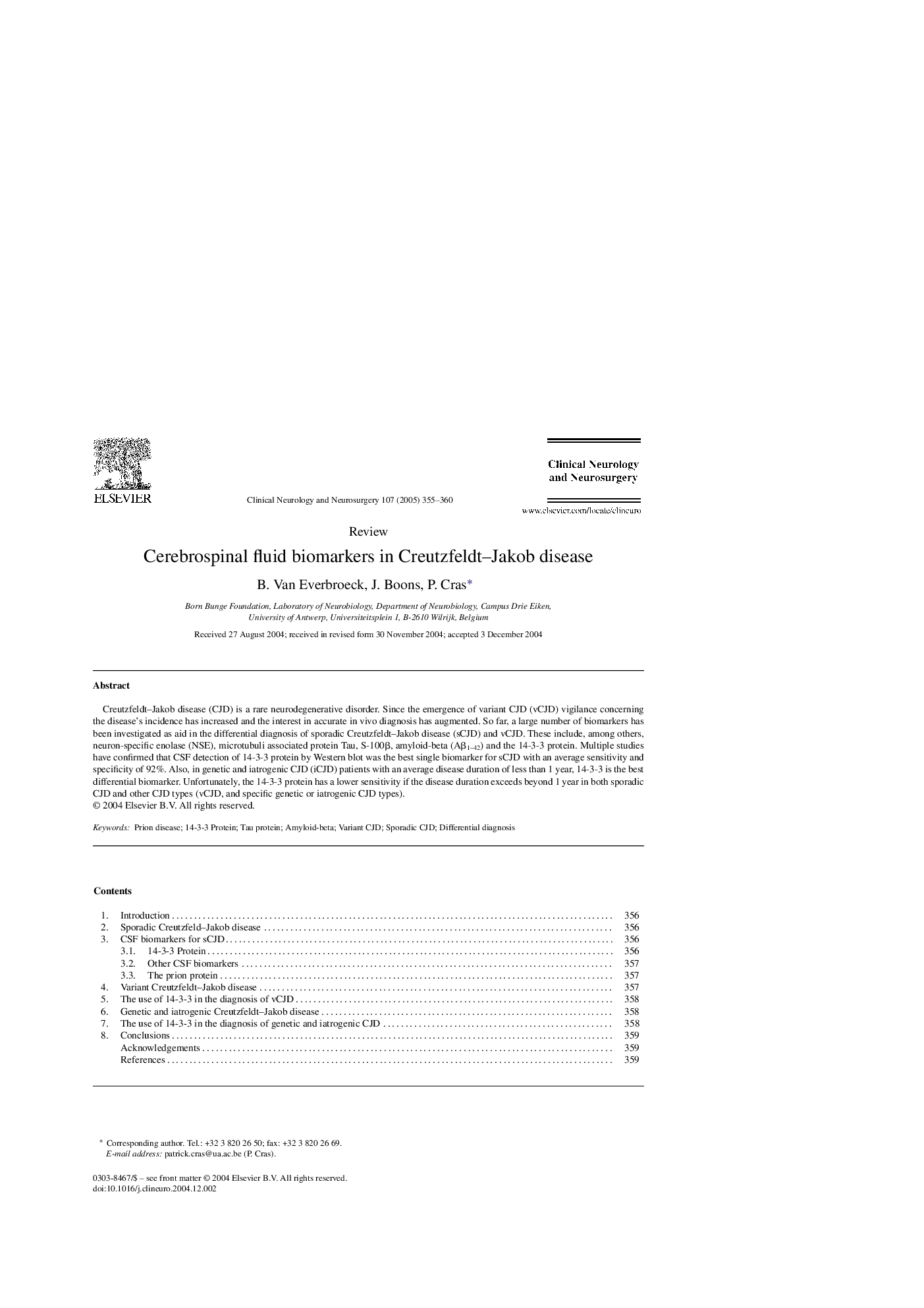| Article ID | Journal | Published Year | Pages | File Type |
|---|---|---|---|---|
| 9188159 | Clinical Neurology and Neurosurgery | 2005 | 6 Pages |
Abstract
Creutzfeldt-Jakob disease (CJD) is a rare neurodegenerative disorder. Since the emergence of variant CJD (vCJD) vigilance concerning the disease's incidence has increased and the interest in accurate in vivo diagnosis has augmented. So far, a large number of biomarkers has been investigated as aid in the differential diagnosis of sporadic Creutzfeldt-Jakob disease (sCJD) and vCJD. These include, among others, neuron-specific enolase (NSE), microtubuli associated protein Tau, S-100β, amyloid-beta (Aβ1-42) and the 14-3-3 protein. Multiple studies have confirmed that CSF detection of 14-3-3 protein by Western blot was the best single biomarker for sCJD with an average sensitivity and specificity of 92%. Also, in genetic and iatrogenic CJD (iCJD) patients with an average disease duration of less than 1 year, 14-3-3 is the best differential biomarker. Unfortunately, the 14-3-3 protein has a lower sensitivity if the disease duration exceeds beyond 1 year in both sporadic CJD and other CJD types (vCJD, and specific genetic or iatrogenic CJD types).
Related Topics
Life Sciences
Neuroscience
Neurology
Authors
B. Van Everbroeck, J. Boons, P. Cras,
